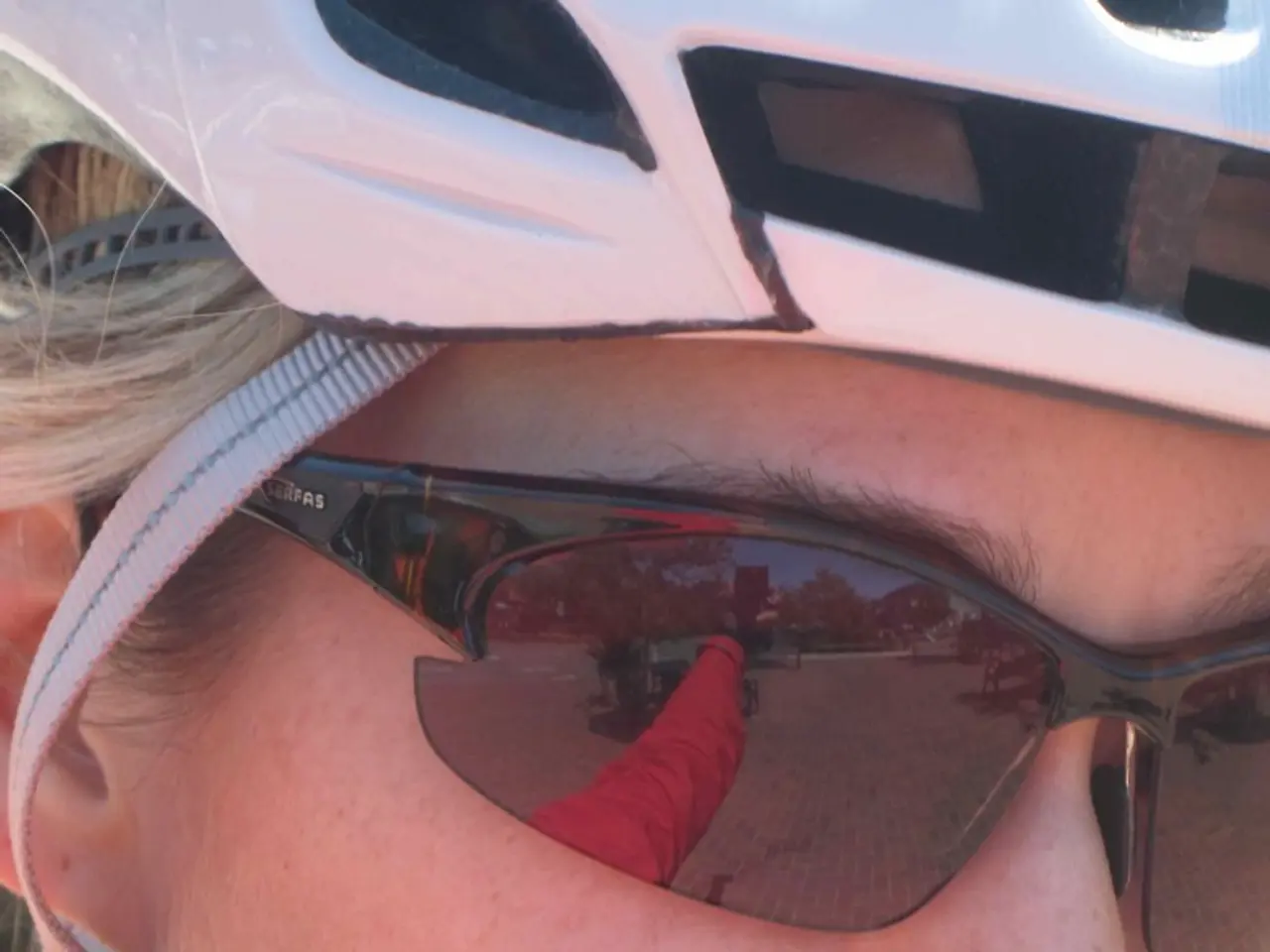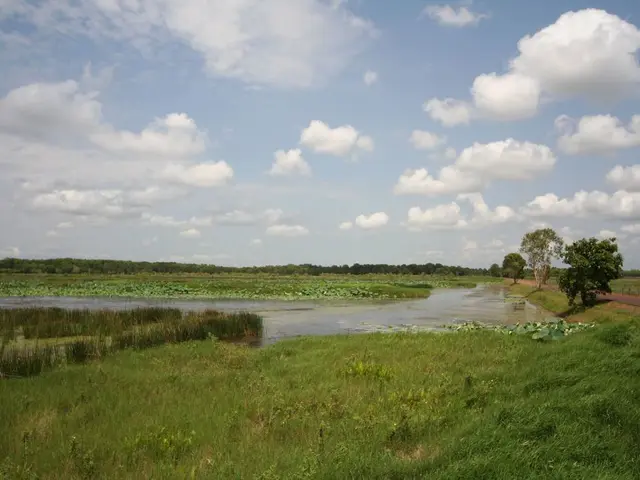Employing Neutral Density (ND) filter to mute the clamor and congestion of London during busy hours
Blurring Crowds in Urban Landscapes: A Photography Guide
In the heart of a bustling metropolis, such as London, the contrast between modern glass-and-steel structures and historic buildings creates a unique and dynamic backdrop for photographers. One technique that can bring these cities to life is by blurring crowds using long exposure, ND filters, and a tripod.
Equipment and Setup
- Mount your camera on a tripod to keep it steady during the long exposure, avoiding camera shake.
- Attach a Neutral Density (ND) filter to your lens. This filter reduces the amount of light entering the lens, allowing you to use a slower shutter speed even in bright daylight without overexposing the image.
- Set your camera to manual mode to control shutter speed, aperture, and ISO precisely.
- Choose a small aperture (high f-number like f/11 to f/16) to maximize depth of field and help lengthen exposure time.
- Set a low ISO (usually the camera’s base ISO) to reduce sensitivity and allow for longer exposures.
- Select a shutter speed that keeps the exposure long enough to blur moving people—this might range from a few seconds to even tens of seconds, depending on crowd speed and light conditions.
- To avoid camera shake, use either a remote shutter release, the self-timer, or the camera’s exposure delay mode.
Composition and Tips
Compose your shot in a location where you can keep the camera stable and unobtrusive, and where people’s movement will create the blur effect without completely blocking the scene. Aim for busy times for more movement in the frame, and experiment with shutter speeds to find the right balance between crowd blur and background sharpness. Consider focusing on a fixed subject or spot, so only the moving crowd blurs.
The combination of the long exposure and ND filter causes moving people to appear as transparent, ghostly blurs, while stationary objects like buildings stay sharp. This creates a dynamic photo where crowds become smooth motion streaks, emphasizing the busy city vibe while making individuals indistinguishable.
Additional Tips
- Increasing Reds, Oranges, and Yellows in Adobe Camera Raw's B&W Mixer panel can lessen the impact of buildings and bright-red cranes.
- Decreasing Blues and Aquas in Adobe Camera Raw's B&W Mixer panel can accentuate the sky.
- The Healing Brush with Content Aware Fill in Adobe Camera Raw can be used to remove distractions like towering cranes and bright-orange carrier bags.
Expert Insights
Adam Waring, the Guides Editor at Digital Camera World and a leading expert on all things Nikon-related, shares his skills on using filters, tripods, lighting, L brackets, and other photography equipment. Adam Waring was the editor of N-Photo: The Nikon Magazine for seven years before joining Digital Camera World and has been a veteran of publications such as PhotoPlus: The Canon Magazine.
In the hustle and bustle of the city, setting up a tripod may require finding an unobtrusive spot. Using a tripod out of the way of rushing pedestrians is recommended for long-exposure shots.
By mastering the technique of blurring crowds in urban landscapes, photographers can capture the energy and vibrancy of city life in a creative and unique way.
- A small aperture on your camera's lens helps maximize depth of field, perfect for blurring crowds in urban landscapes.
- With the use of a tripod, you can ensure a steady camera during long exposure in the heart of a bustling city.
- Neutral Density (ND) filters, when attached to your lens, help reduce the amount of light entering, allowing for slower shutter speeds even in bright daylight.
- While composing your shot, consider focusing on a fixed subject to emphasize the blur of moving crowds.
- Long exposure photography in home-and-garden settings might also reveal intriguing visual stories, with a tripod and ND filter coming in handy.
- The combination of a tripod and low ISO minimizes camera shake and allows for longer exposures, essential for capturing the blur effect.
- A slow shutter speed keeps the exposure long enough to blur moving people in the midst of a crowded cityscape.
- For those interested in learning more about this technique, a tutorial on urban photography might shed some light on the subject.
- Landscape and wildlife photographers can adapt this technique to their gear, blurring the movement of animals or elements in their images.
- Lifestyle and travel photography, exploring remote destinations and capturing local cultures, can benefit greatly from mastering the technique of blurring crowds in urban landscapes.




